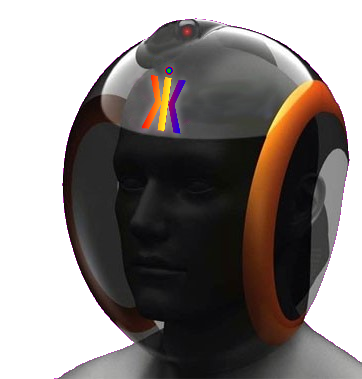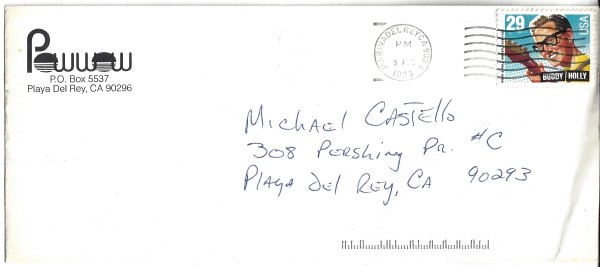KiKoon – Virtual Reality Helmet

Kick-Start the Future
KiK-Helmet
The internet, in many ways, has become stagnant for me. I’m aware that billions of people have yet to fully experience its reach, but technology seems to be lagging behind its ultimate purpose. When I lived in NYC in the 80s, I recall being holed up in my apartment whenever it snowed or rained, yearning for the sunny climes of Florida where I grew up. New York had its fair share of gloomy days, sometimes extending for weeks. I’m certain those days indoors played a role in enhancing my musical career, prompting me to write more and perfect my guitar skills and performance. I craved blue skies and warm oceans so intensely that, on some overwhelming days, I’d drive to the airport and fly down to Florida. It’s probably why I eventually settled in sunny Southern California, where we enjoy around 350 days of sunshine annually. I like to describe it as an “endless summer.” Living near Santa Barbara is beautiful, but I wish the Pacific Ocean were a tad warmer.
 When home computers and the internet merged in the early 90s, I thought about my days in NYC and how wonderful it would have been to virtually visit Palm Springs, Pebble Beach or Acapulco. This inspired me to register domain names that resonated emotionally with me. If a word evoked a powerful image or feeling, I wanted it. In 1995, I was one of the first to create a geo-domain destination online with PalmSprings.com. Around 1996, I also dabbled with VRML (Virtual Reality Modeling Language) for 3D interactive vector graphics. My vision for PalmSprings.com was to allow visitors to soar over a 3D cityscape and choose their landing spot, familiarizing themselves with places they’d eventually visit. However, the technology and bandwidth for such visuals were not yet available.
When home computers and the internet merged in the early 90s, I thought about my days in NYC and how wonderful it would have been to virtually visit Palm Springs, Pebble Beach or Acapulco. This inspired me to register domain names that resonated emotionally with me. If a word evoked a powerful image or feeling, I wanted it. In 1995, I was one of the first to create a geo-domain destination online with PalmSprings.com. Around 1996, I also dabbled with VRML (Virtual Reality Modeling Language) for 3D interactive vector graphics. My vision for PalmSprings.com was to allow visitors to soar over a 3D cityscape and choose their landing spot, familiarizing themselves with places they’d eventually visit. However, the technology and bandwidth for such visuals were not yet available.
I started gaming in the mid-80s, reminiscing about playing Dungeons and Dragons—a C-prompt command game with binary characters depicting monsters. Your imagination was the tool that brought the vivid imagery to life, offering an exhilarating experience. In 1989, I visited a local “Egg Head” computer store, eager to purchase a graphically intensive game. The best game available required swapping between eight 5 1/4 floppy discs due to the constraints of the DOS Plus platform I was using.
There were no hard drives that you could use so I had to keep swapping the discs back and forth to further the game. I remember it being so cumbersome with cheesy. I thought “this has got to get better, a lot better”. The graphics were rough and it lacked the immediacy required for a player to forget their surrounding and immerse themselves.
Nowadays, gaming technology is advanced enough for players to immerse themselves entirely in a virtual universe. It feels like transitioning from my actual environment into a new realm. I’m familiar with every corner of my virtual space, just as I am with my home. The challenge lies in bridging the gap between the dynamic gaming world and the comparatively static internet. Both realms need to intertwine seamlessly within the same foundational fabric.
It has to be “Real” virtual reality
For me, it’s crucial to achieve “real” virtual reality. Current virtual headsets fall short. I believe in a more organic interface, such as water, needs exploration. Virtual reality should deceive the brain into accepting the experience as genuine, be it beauty or terror. Thankfully, our heads centralize numerous senses, including touch, sight, smell, hearing, taste, emotion, temperature, balance, and cognition, making the it an ideal “interface” for virtual interactions.
One night, back in 1992, I had a fantastic dream. It was more like a vision it seemed so real. My head was in a helmet that was clear but had a mist swirling within it where projections of images were created. It seemed so life-like that I woke myself up and I documented my vision by jotting down the basic concept, and created a logo called Cocoon, on my computer which printed on my dot matrix printer. Afterwards, I placed it all in an envelope and mailed it to myself.
A few days later, I called IBM headquarters and spoke to someone about developing my idea but they advised me that IBM no longer had an R&D department with the funding and capabilities it once had.
For more than two decades I spoke about my dream to friends and family. Sadly, I was never able to find that letter again. At the 2014 TRAFFIC conference, for domainers and investors in Vegas this year, a friend was smoking a vapor pipe and I said to him “you know vapor is the future of the internet” and I told him some of my story. He mentioned that I should get a patent and I recalled the letter that I could no longer find. He advised me to still get a patent even though it was twenty-two years later.
I went back my home in Moorpark and tried looking everywhere for that letter again. After all, if I found it I would have some proof of my vision. Over the years, I looked through everything and everywhere to no avail. I was at the point where I was about to finally give up for good but felt like I needed to give it one last try this time praying and visualizing that I would find it. I again went to my old file cabinet and instinctively pulled out two folders. I brought them into my kitchen where my wife Sheri was preparing dinner and laid them on the counter. I open the smallest folder first and there, right on top, the first thing I saw was the letter! I’ve looked through every inch of that file cabinet so many times before. It was so odd to me that it could be there. It was like seeing and old friend. It had the stamp and my company letter head Powwow Productions from 1992. It is still unopened but I know what is in it. Was this the right time for KiKoon?

KiKoon – Virtual Reality Helmet
This application uses water vapor (or synthetic vapor) as its interface. A double shelled helmet that surrounds the user’s head can also be suspended from the ceiling. The outer shell has fiber optic strands that are embedded throughout and are activated by lasers from the back of the helmet. Three types of water and separately charged to react; one for Red (positive), one for Green (negative), and one for Blue (Neutral). The charged water vapor is activated by three lasers that project a 3D prism effect of the water particles maintained within a sealed pressurized atmosphere of the space between the outer and inner layers that sustain and suspend the vapor. The lasers illuminate the vapor and its density catches the lasers intensity and protects the eyes. From the mist come dynamic visuals of color and depth. What is most important is that the water droplets remain separate from each other and are allowed to perform as a sort of cloud in the confined space. They must stay in a mist or vapor condition in order to be properly controlled by the lasers that will project the information to their selectively charged droplets.
These vapors are charged in such a way that they can commingle in the airspace between the inner and outer shells. The proper atmospheric level/pressure is needed in order to keep the droplets from attracting or bonding to each other.
Why KiKoon is needed and should be developed
Is KiKoon is even possible to produce? I am not a scientist or engineer but perceiving something before the internet became useful makes me believe there was a reason I saw it. I believe Thomas Edison had a similar vision of the light bulb but did not know what the filament was made of that gave off it’s glow. He must have seen that it was glass and had a vacuum. From there he needed to work to find the other properties to make it reality. His vision was real.
If we can create a true virtual experience that actually puts the host in a real or fictional position, we can then expand our life dimension. It applications can be profound for medicine, education, entertainment, travel, even space and robotics. Imagine actually visiting Palm Springs or Nashville from our home or interacting with band members as if they were performing on the same stage while being in different states or countries. Feeling the air and seeing the depth of the space around us. What we now see around us could be a virtual projection. Can we fool the mind into believing it? All we need the “right” interface.
Besides the finding the letter, I also came upon an entry from my 1992 calendar where I had written-“The potential of this is incredible. I have seen the future.” I still feel that way.

Virtue.com
Be in general Virtuous, and you will be Happy.
Benjamin Franklin, letter to John Alleyne, August 9, 1768
A general dissolution of principles and manners will more surely overthrow the liberties of America than the
whole force of the common enemy. While the people are virtuous they cannot be subdued; but when once
they lose their virtue then will be ready to surrender their liberties to the first external or internal invader.
Samuel Adams, letter to James Warren, February 12, 1779
What is Virtue?
A virtue is a positive trait or quality deemed to be morally good and thus is valued as a foundation of principle.
What is Moral?
Concerned with principles of right and wrong or conforming to standards of behavior and character based on those principles.
What is Principle
A principle is a law or rule that has to be followed.
God grant that not only the love of liberty but a thorough knowledge of the rights of man may pervade all the nations
of the earth, so that a philosopher may set his foot anywhere on its surface and say: This is my country.
– Benjamin Franklin
To one who has faith, no explanation is necessary. To one without faith, no explanation is possible.
– Saint Thomas Aquinas
There are moral and ethical applications for virtue to reside within the internet to safegaurd Virtual Reality and Augmented Reality.
– Virtue.com

